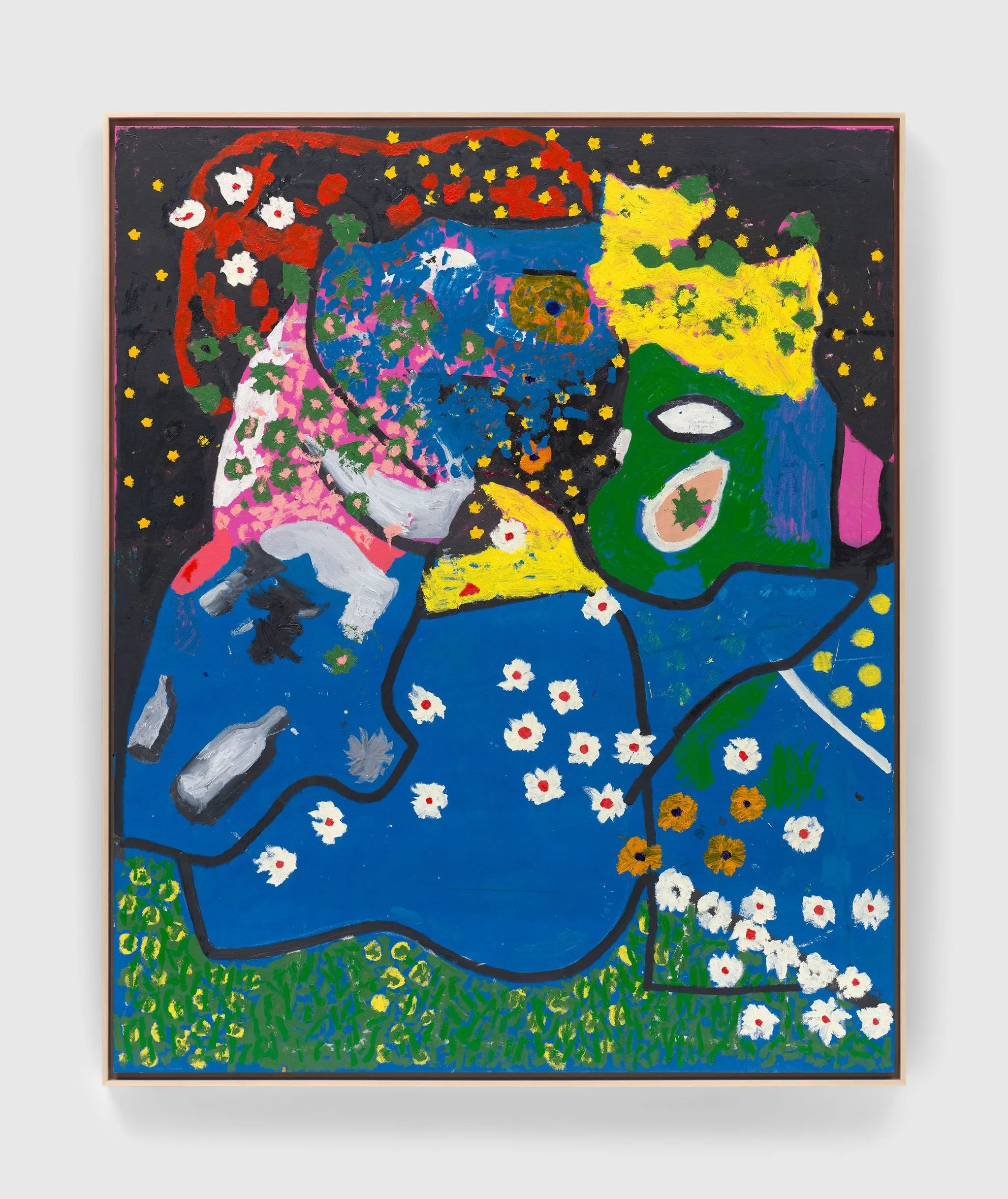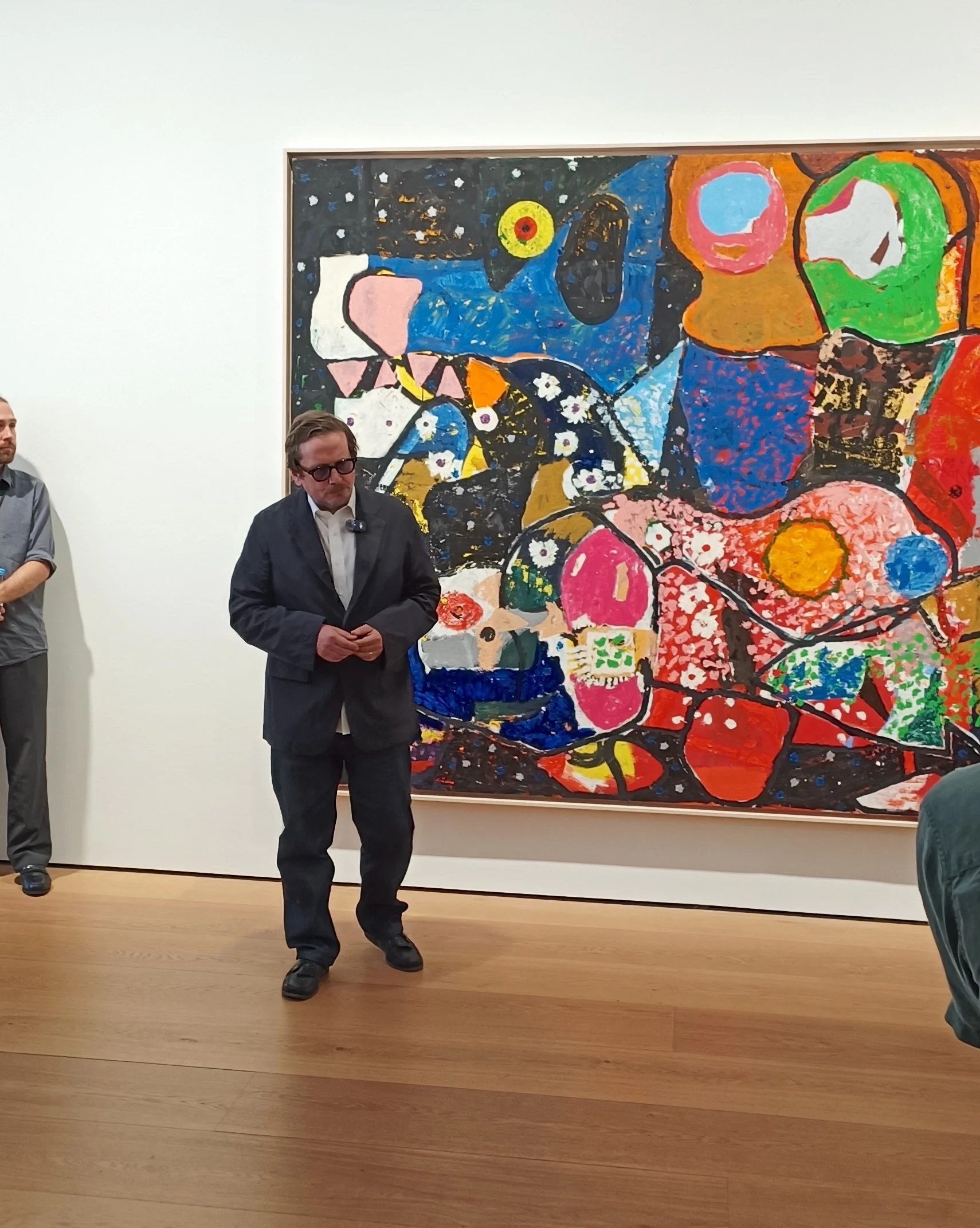117. JOE BRADLEY: A SPACE BETWEEN EXHILARATION AND EXHAUSTION.
Animal Family, David Zwirner - London.
Joe Bradley, You & I, 2025, Oil on Canvas. 231.1 X 190.8cm. Image courtesy of David Zwirner.
Joe Bradley's saturated series of new paintings appear as freeze frames of avant-garde cartoons - as black outlined petri-dishes violently teeming, demanding our attention. Suites of canvases contribute to an atmosphere of parade at peak, a piñata at busting, a sugar high pre low. And yet what is Bradley's Animal Family signifying? And why are these works being presented now?
Bradley, a key member of the art world’s third generation of abstract expressionists, stands in front of 'Good World', a richly concentrated canvas which immediately evokes the heritage of the art period which he loves. A period, originally formed between the mid 1940s and 1950s. Predominantly based in New York by a collective of names, many of whom fled Nazi occupied Europe during World War two for the freedom of the United States. Creating works which were a catharsis to the horrors experienced in their home nations.
New York, the original centre of abstract expressionism, is also the home of Bradley, who’s returning focus of maps defiantly outlined in black, is first seen in 'Good World' - a patchwork of impasto blocked colour - layered to form a patina, an interplay - a cacophony - a visual slice of hysteria, with no sense of beginning nor end. We are viewing a moment which seems to be sustained throughout the twelve exhibited paintings, a technique of composition at first exhilarating and also exhausting.
Many techniques employed within the dozen canvases are actively borrowed from the roll call of artistic forefathers, he freely admits to being influenced by. Francis Picarbi’s 1940s monsters, Philip Guston 'my god - an uncomplicated love affair', Alexander Calder’s 'a big touch stone... a reaction to evil'...even using the same proportions as Willem de Kooning for a series of paintings; 'it sounded like a challenge'. The artist freely quotes from his heroes, Guston once said - 'When a painting feels hopeless, it is often the best one - as you don't have an attachment to it - to work on a painting without reservation... a painting which surpasses - has to feel unfamiliar and yet authentically its own.’
A returning sense of what appears to be cartography forms the focus of the most sustained and resolved works on show, the connection to nationality, state lines, border control and coded politics which surround these decisions seems an irresistible assumption regarding context, and yet are not mentioned within the narration offered by the artist. A scattering of stars and daisies fall as confetti over the four strongest paintings seen, tethering the collection as a whole, and offering a much-needed respite to the overt bombardment of energy witnessed.
The sense of timing and time delay is fascinating, whereas Bradley's fraternity of chosen family forefathers were known to create to the improvisation of jazz, the undulations and hypnotic rhythms which pulse through Picarbia... Calder's orchestral arches and Guston's rumbunctious percussion appear more as samples to Bradley's hip hop. Blaring colours distract from any sense of respite, proposing a question of why a state of nostalgia not lived by the artist first-hand is relevant at a time where so much needs to be addressed? It is this point that Bradley exposes, a line of modernity, a possible vulnerability, signifying a truth which, in contrast to his bombastic paintings, at times reveals possible signals, half hidden - and yet in plain sight.
Joe Bradley, David Zwirner Gallery, 11 June 2025. Image: M-A (A SPACE BETWEEN).


